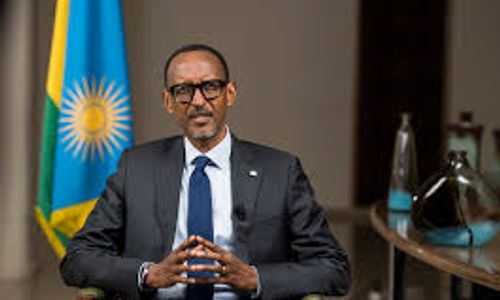Prior to 1971, the US dollar was backed by gold, silver or a combination of both. In 1971, President Nixon officially ended the gold standard and made the United States dollar a fiat currency. Fiat means “let it be done” in Latin. Therefore, a “fiat currency” derives its value from government decree rather than any physical commodity.
After the collapse of the gold standard in 1971, the US entered into agreements with Saudi Arabia and other oil-producing nations where they agreed to price and sell their oil exclusively in US dollars which was nicknamed Petrodollars. In return, the United States agreed to provide military support to these countries.
This arrangement created strong global demand for dollars because countries needed them to purchase oil, a crucial commodity for all economies. As a result, the US dollar became the dominant global reserve currency.
In recent years, the petrodollar system has come under fire. Some countries (especially BRICS nations – Brazil, Russia, India, China, and South Africa) have explored alternatives to the US dollar for international trade, such as other currencies and even gold
But surely a government decree is not sufficient to turn paper into money. If the government passed a law that said all greeting cards, or printer paper, or pages ripped from a dictionary will now serve as money, we would scoff.
Plus, it is not just those under the US jurisdiction that use the dollar. The dollar is the global reserve currency, which means individuals, institutions, and central banks all over the world use it as a medium of exchange and a store of value.
Ultimately, all currencies must be backed by something valuable. Either the currency is intrinsically valuable (gold and silver coins, for example), or it represents something valuable.
Gold has its own market value independent of any counterparty or government. Under the gold standard, the value of the dollar was directly linked to the amount of gold held in reserves. No one needed to trust the issuer of the currency; they just needed to be able to redeem their dollars for gold at a 1:1 ratio.
Government fiat, on the other hand, has no intrinsic value. If a government wants to manage its own currency, it must create its own demand. It must prove that it has a consistent source of revenue – a way to access real economic value – to back up the currency.
The Dollar is Backed by US Government’s Ability to Generate Revenues in 2 ways. These are taxes and debt. On Taxes: Market participants (workers, entrepreneurs, investors) create wealth when they produce and exchange goods and services. The government extracts a portion of this wealth via taxes. Capital gains, income, corporate, payroll, sales, property, excise, and estate taxes are all ways of extracting wealth at different stages of the market process. While on Debt: The government extracts wealth from the future and brings it to the present by selling government bonds (Treasury securities). Of course, all debt must be paid back with interest, or else no one will lend the money in the first place.
So, rather than allowing users to redeem their dollars for a valuable asset like gold, the government ties the value of its fiat currency to its ability to generate revenues through taxation and debt. Both are a way of saying, “we have access to something valuable, therefore you can trust that the dollars in your pocket will always be worth something.”
The stronger and more stable the economy, the better The government has access to a huge reservoir of economic value as long as the market process continues. The government itself produces little to no wealth, although it does maintain the legal structures to make production, exchange, and wealth creation more efficient.
The United States has the largest and most diverse economy in the world. Its capital markets are deep, transparent, and stable, which increases trust and encourages both domestic and international market participants to use the dollar for transactions.
Is the Dollar Backed by Government Debt?
In some ways, yes. Congress requires the Federal Reserve to hold a portfolio of government bonds (mostly Treasury securities) that covers the total value of physical dollar bills in circulation.
If we check the Fed’s latest balance sheet report (H.4.1), we can confirm that “Securities held outright” exceeds “Currency in circulation”.
So dollars in circulation are directly backed by government debt. However, it is important to realize that physical currency is only a tiny portion of the total money supply. This is because most money is created by commercial banks, not the Federal Reserve.
The US government ensures the value of Treasuries (and thereby the dollar) by ensuring that foreign and domestic economic participants trust that the United States will always pay back its debts. Indeed, investors often consider Treasuries to be “risk-free” because US creditworthiness is so strong.
We still haven’t covered the whole story. A functional currency needs to be highly marketable, which means people need to use it for everyday transactions. The US government uses four mechanisms to guarantee the economy’s dependence on the dollar, thereby maintaining its exchange value: Legal tender laws, Regulation of the banking system, Monetary policy, and International trade agreements.
The weakness of fiat systems is that; Fiat currencies are the accepted paradigm across all modern economies. However, the structural weaknesses in the fiat currency system may eventually bring it to a close.
The first weakness of a fiat system is the lack of safeguards on money printing. According to Nobel Laureate F.A. Hayek, inflation is politically impossible to avoid under a fiat system because it always provides “temporary escape from acute difficulties.” Printing money and stacking on debt can “quickly remove the causes of discontent of particular groups…but are bound in the long run to disorganise and ultimately to destroy the market order.”
Nearly 250 years ago, Adam Smith wrote in The Wealth of Nations, “There is no art which one government sooner learns of another than that of draining money from the pockets of the people.”
Unfortunately, these great economists have been proven correct. Since the creation of the Federal Reserve in 1913, the U.S. dollar has lost 98% of its purchasing power.
The ability to create money removes fiscal discipline. Governments tend to rely on currency creation rather than making tough fiscal choices, leading to unsustainable debt levels and economic instability. A debt-based monetary system requires pulling more and more purchasing power from the future. Under this system, perpetual devaluation of the currency is all but guaranteed.
Hayek and other economists have proposed systems which allow banks to issue their own currencies, thereby removing the government’s monopoly on money. In theory, this would allow consumers to choose currencies that are stable and well-managed, rather than being compelled to use the government’s fiat currency.
.jpg)







